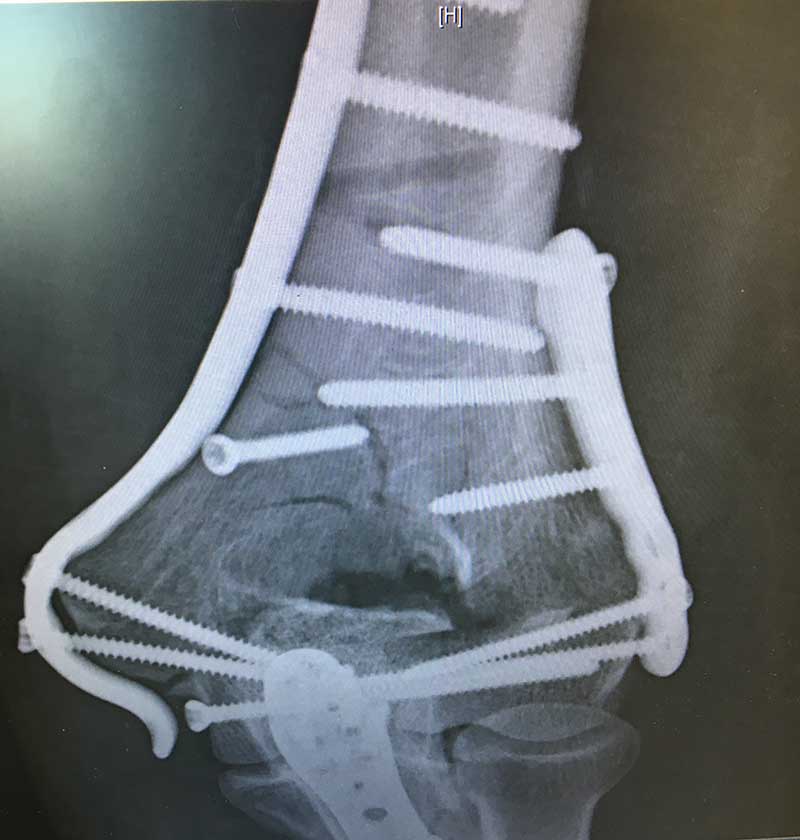Stiffness from an Orthopaedic perspective is the inability to easily move a joint. The most common complication following any elbow injury or surgery is stiffness. It is also possible for excess bone to form in the soft tissues around the elbow, called heterotopic ossification.
It is best to prevent a stiff elbow by movement of the elbow as soon as practical. The surgeon will balance soft tissue considerations, fracture stability and other patient factors when deciding whether to move the elbow early or not. If the elbow becomes stiff it can sometimes be splinted back to a functional range of motion. This is most effective in the first six months following injury or surgery. Typically this involves soft tissue stiffness only and will not overcome joint deformity.
If all non operative measures have failed, a surgical stiff elbow release can be performed. This is typically performed when patients are no longer able to put their hand to their mouth, or lose more than half of their straightening ability.
Stiffness can be…
- Within the joint;
- Because of the joint; or,
- Outside the joint.

There are many different methods of performing a stiff elbow release. Nowadays, a significant portion of the surgery is usually done arthroscopically (with keyhole surgery) but often an open incision is required. If the elbow does not bend beyond a right angle you will almost certainly require release of the nerve at the inside of the elbow (the ulnar nerve) and part of the medial collateral ligament to prevent problems with the nerve following the surgery. While the risk of complication is quite low with this type of surgery, the consequences of a complication can be significant. This is particularly true with regard to hand function if one of the nerves which supplies the muscles in the hand and/or skin sensation is damaged.
There is a significant post operative rehabilitation period required following the surgery. This may involve up to 5 days (in extreme circumstances) in hospital on a machine which moves the elbow for you (CPM or Continuous Passive Motion) and, depending on the type of operation, either a splint or movement machine at home for a period of weeks as well. For most people 2 days is enough.
While there are risks involved with this type of surgery, the results are quite gratifying. At least 80 percent of patients achieve a fully functional elbow and 90% of patients are within 10 degrees of this.
The pre-operative range of movement does not necessarily dictate the final motion gained, although it does determine the complexity of the operation which is required.
PATIENT INFORMATION Handouts
FAQs
Almost everyone will have more movement after surgery. Some people have virtually normal movement once they have completed their rehabilitation programme but some people do have some residual loss of movement. The result will often be determined by the cause of the stiffness in the first place.
Most stiff elbow releases are performed arthroscopically these days. There may need to be a small open cut to release one of the nerves or ligaments which may be contributing to the stiffness. If there has been previous open surgery to the elbow then generally the surgery is done ‘open’ with a bigger cut. Excellent results can be achieved both ways.
After the surgery you will generally be given a nerve block to make the arm go numb. This allows us to put you on a machine (CPM) which stretches out your muscles back to their correct length. For most people the muscles have not been at the correct length for some time and they will not want to go back to their original length. The machine stretches them out and pumps any excess fluid out of the elbow until they get used to being the correct length again. For some people this happens in one night but more severe cases may require up to 4 nights on the machine.